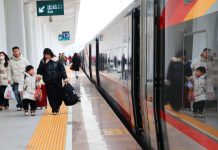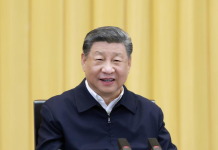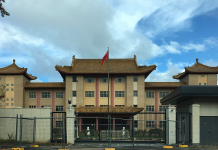Shanghai: Sprawling out on the periphery of Shanghai’s Hongqiao airport and railway station looms a vast structure resembling a gigantic lotus leaf from above. This megastructure, the National Exhibition and Convention Center, is one of the world’s largest single-block buildings, spanning 1.55 million square meters. The truly remarkable thing about this building is that no carbon emissions are produced in its operation during the China International Import Expo.
The NECC is the annual home for the CIIE, an event that attracts numerous exhibitors, buyers and exhibitors from across the country and around the world.
From 2021, all the booths and displays, all the electricity used to power the lights and all the coaches used to ferry people back and forth had no carbon footprint. The material in the booths came from sustainable sources. The electricity came from wind and solar. The coaches were electric. Collectively, the sustainable practices implemented by the NECC result in a reduction of 46,800 metric tons of carbon dioxide emissions each year, according to the building’s management company. The Shanghai Hongqiao International Central Business District, where the NECC is located, has spearheaded a volley of low-carbon initiatives since the district was established in 2010.
Fifteen years on and Hongqiao CBD is a global front-runner in terms of urban city planning, sustainable development, low-carbon construction, design and operations.
At its inception, the administrative committee behind Hongqiao CBD set the goal for the district to produce 45 percent less carbon emissions than other districts in Shanghai produced in 2005. By 2017, Hongqiao CBD’s carbon footprint was 58 percent less than the level of other Shanghai districts in 2010.
“Integrating advanced development concepts and aiming to be a model for future cities, the district has adopted a range of green technologies and approaches, including mixed use of business formats, a multi-layered pedestrian system, 100 percent green building design compliance, and extensive rooftop greenery,” said Kong Fu’an, Party secretary and executive deputy director of the Shanghai Hongqiao International Central Business District Administrative Committee.
“Such practices embodying green and ecological principles are carried out throughout the planning, construction and management life cycle, ensuring sustainable development,” he said.
Hongqiao CBD, situated on the western side of the center of Shanghai, has grown into a pivotal transport hub for the Asia-Pacific region, a key node in the national unified market, a catalyst for the integrated development of the Yangtze River Delta region, and a driving force for Shanghai’s continued growth, Kong said.
In 2023, Hongqiao CBD set targets to achieve a forest coverage rate of 23 percent and to construct 180 kilometers of greenways by 2035. Xu Mingsheng, head of construction for Hongqiao CBD, said sustainability is at the heart of every project. “The district’s green and low-carbon efforts rank among the best internationally, and even outperform many counterparts in the West,” he said. –The Daily Mail-China Daily news exchange item






